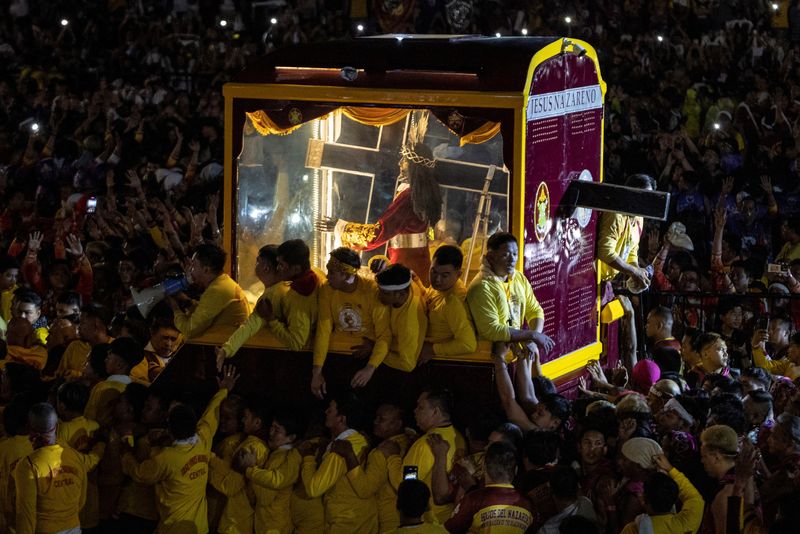
MANILA (Reuters) – Hundreds of thousands of barefoot devotees joined the Philippines’ annual procession of a century-old statue of Jesus Christ on Thursday in one of the world’s grandest displays of Catholic devotion and expression of faith. .
Filipinos turned the streets of Manila into a sea of maroon and gold and flocked to the “Black Nazarene”, a life-size image of Jesus Christ carrying the cross, as devotees jostled for the opportunity. to pull the thick rope that drags the chariot across the sea. capital of the Philippines.
Procession organizers estimated that around 220,000 people attended mass before the procession, while 94,500 marched as of 8 am (0000 GMT). That number is expected to increase as it moves along its 5.8 km (3.6 mile) route.
Other devotees threw white towels at the image as marshals wiped it on its face, believing that touching the statue would bless them and cure their ailments.
Nearly 80% of Filipinos identify as Roman Catholic, a significant legacy of the Spanish colonization of the Philippine archipelago for over 300 years.
The late Filipino priest and theologian Sabino Vengco said in 2019 that the venerated black color of the statue was due to the mesquite wood used to make the image, dispelling a long-standing myth that the black image it was caused by a fire that broke out on the ship that brought it to the Philippines from Mexico in the early 17th century.
The procession, called “traslacion”, or translation, commemorates the transfer of the Black Nazarene from a church within the old Spanish capital of Intramuros to its current location in the Quiapo church.

Cardinal Jose Advincula, archbishop of Manila, told the devotees on Thursday to abandon evil, greed and vice and follow the teachings of Jesus Christ.
“Let us live according to his commandments, accept his teachings and follow his example. It is better to follow the Dear Lord,” said Advincula in his sermon before the procession.








